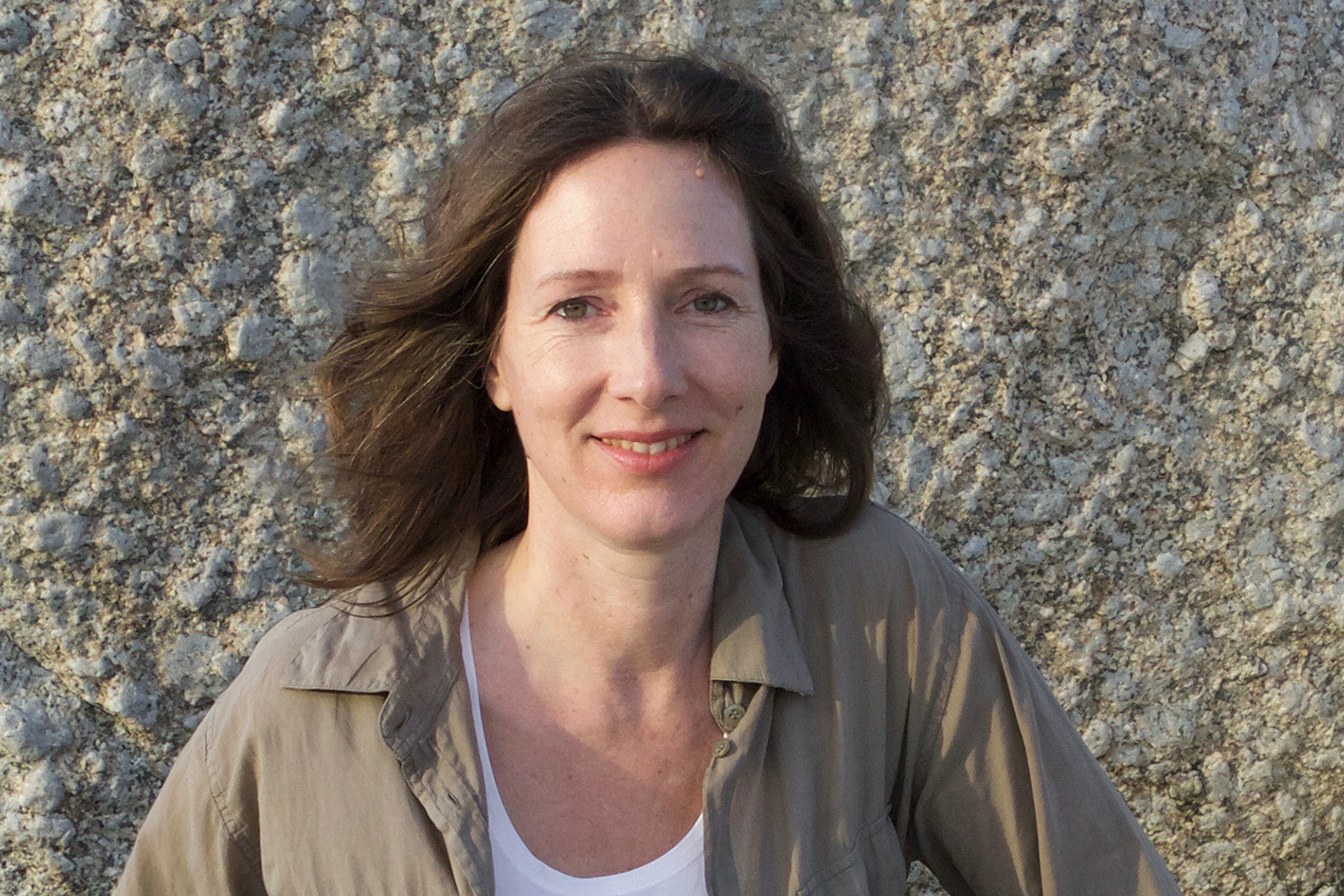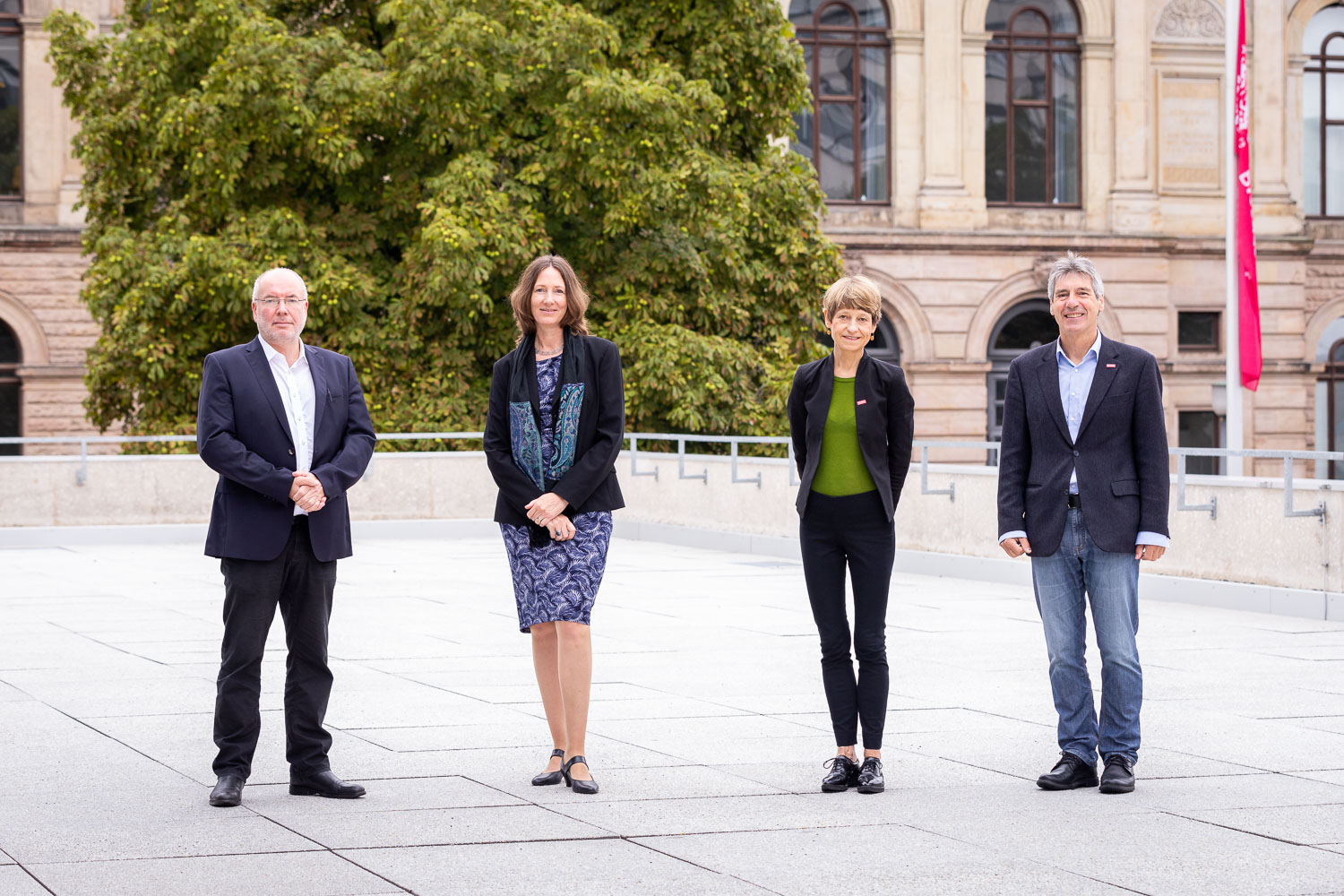Between Ancient Egyptian Architecture and Lower Saxon Mansions Professor Ulrike Fauerbach is the new Head of the Institute for Building History
How much Egypt is there in Europe? “Plenty!” says Professor Ulrike Fauerbach. The expert in ancient Egyptian architecture has headed the Institute for Building History since September 1. In an interview, she told Bianca Loschinsky and Heiko Jacobs what we can learn from history for today’s architecture, why the study of historical building techniques is important and why we need to think about the village of the future.

Professor Ulrike Fauerbach is the new Head of the Institute of Building History. Picture credits: Ingo Helmedag
Professor Fauerbach, you were a professor of architectural history and historical construction at OTH Regensburg. Why did you decide to come to TU Braunschweig?
I really liked the fact that I was able to gain very broad teaching experience at the Regensburg University of Applied Sciences, because the focus of the OTH is on practical teaching. It’s all very “hands on.” After this time, I have a great desire to explore theoretical contexts again. Being part of a renowned university in the middle of Germany is of course also a big advantage of Braunschweig. I also notice this very strongly in the preparation of my research and teaching.
You are an expert on ancient Egyptian architecture. That’s not in the middle of Europe. How much “Egypt” is there in Europe?
Of course, a lot! Europe, for example, has learned ashlar architecture from the Egyptian builders. But I also find it interesting why the question arises in the first place. If I were an expert on classical Greek or Roman architecture, you might not have asked the question that way.
Egypt appears again and again as the epitome of the “Other” – even in antiquity, by the way. It then runs through the reception of Egyptian history and architecture. The Other is always a reinforcement of the “we.” By defining the Other and outlining the concept, we also sharpen the “we.” And this can be wonderfully studied in Egypt. These questions are becoming increasingly important right now: the concepts of the “we” and the Other are shaping our current social discussions. The demand for greater diversity in all matters is very loud right now. You can jump right in with Egypt as an example in the history of architecture.
What can we learn from history for today’s architecture?
If we look at Egypt, we are dealing with a 3,000-year continuous history. It is understood as one culture. The Egyptians of the first century B.C. still thought as a “we” when they looked at the pyramids. This is really a unique feature when you look at the architectural history of the Mediterranean and Europe.
Each generation believes it can find solutions for eternity. When you look at an “experimental laboratory” that is over 3,000 years old, as in Egypt, you realize that these solutions often last only one generation – even if you build like the ancient Egyptian builders. In some cases, they had a warranty period of several thousand years. And even there, you find that the next generation already thinks quite differently. For example, the ratio of quality to quantity sometimes tips within a generation.
And if we look even further, to the Future City?
The study of ancient Egyptian architecture doesn’t happen in a vacuum, but takes place in Egypt today. I lived in Cairo for seven years, and for many years before that I spent several months at a time in the provinces. This gives very exciting insights as far as the urban-rural contrast is concerned. This rapid population growth is like a time lapse. When I first worked in Egypt in the late 1990s, the country had a population of less than 70 million. Now the population is estimated at over 100 million.
You can see that urban planning can only ever plan behind this growth. What I also took away for Germany there is that we also have to think about the village of the future and not just about the city of the future.
What actually prompted you to do research in this field?
I started studying Egyptology when I was 19. There was a lot of childlike curiosity and enthusiasm that made me do it. Of course, it was very different from what I had imagined. But I stuck with it, for a variety of reasons. It’s amazing that ancient Egyptian architecture is still very under-researched. We can still unearth a great many treasures here.
What other research focuses and projects will you be working on in Braunschweig?
On the one hand, I already have various loose ends of a network that I can now tie up again. For example, I have been in contact with the Roemer-Pelizaeus Museum in Hildesheim for a long time. We are currently designing a project with the HAWK University of Applied Sciences and Arts Hildesheim/Holzminden/Göttingen to do research in Egypt.
The second topic that I have written on my agenda concerns the contrast between city and countryside that I described earlier in Egypt. It also characterizes the Upper Palatinate, for example, where I just came from, but it also characterizes Lower Saxony. We have cities, some of which have a very long history with rapid periods of growth, and we have a rural area that is historically incredibly exciting and incredibly attractive. This has many points of contact for a sense of identity, in which architectural research can make a very important contribution.
That means that the Lower Saxon hall house in its many variations will be allowed to play a role again, also in the effects that it has in part in contemporary regional architecture?
Residential architecture plays a major role, of course, but individual monuments are also important for identity. If you think, for example, of the castles, palaces and stately homes with which Lower Saxony is richly blessed. I think it’s helpful to strongly communicate their value again, because they partly help shape the town centers and the identity of the entire region.

Professor Ulrike Fauerbach at her appointment by TU President Professor Angela Ittel, with Professor Berthold H. Penkhues, Speaker of the Department of Architecture and Professor Wolfgang Durner, Dean of the Faculty of Architecture, Civil Engineering and Environmental Sciences. Picture credits: Markus Hörster/TU Braunschweig
What excites you about your research? What was your best experience as a scientist?
The moment of realization is what excites me so much about research. It has also carried me through difficult phases: that one moment when you suddenly understand something or see something for the first time. Sometimes it’s just a moment, but sometimes it’s a process that takes hours, weeks or even months to realize that something is happening here, that it’s complex, that it’s interesting. And at some point the penny drops.
Example: I discovered an architectural drawing in a rather poorly lit stairwell from the first century BC. I walked along there a lot during the research campaigns, but at some point the incidence of light was right to suddenly recognize something that hundreds of people had already walked past.
What kind of architectural drawing was it?
It was a design sketch for a capital, carved into a window jamb by either a master craftsman or a student. They are very thin incised lines. Usually a surface like that is prepared, often colored, so that when you carve into it, you can easily see the white limestone – in this case, the light sandstone – underneath. Once the coloring is gone, the scribe lines are barely visible. After thoroughly studying the other windows, I was able to discover two more sketches. Why do I think it was a student? One drawing was crossed out, presumably by the master craftsman.
We know a great deal about ancient Egyptian culture. But in the end, you can never really approach a foreign culture. Except perhaps in moments that are very similar to our own life experience. That’s the great thing about civil engineering. The problems there are often the same.
From the Egyptian student to our students: What constitutes good teaching for you?
Good teaching is teaching that gives you courage: not to let personal weaknesses unsettle you and not to let them stop you when things don’t work out right away. But it also encourages us not to be too unsettled by what is happening around us. Contemporary events have always been very complex. But this is currently becoming very clear to us. It feels quite threatening in parts. If you put it in a big context, like “We’ve had this kind of thing before, that also passed,” that can be helpful, and that’s what I’m trying to convey.
Do you see parallels in history to the situation today?
With what is happening in our country right now, I think of the end of the 19th century: with a similar rapid technological development, which was also very frightening for the contemporaries. Technical development often makes rapid leaps, but social and psychological development often lags behind. This is also due to the fact that we sometimes wrongly neglect them.
For example, science developed the vaccine against Covid 19, and we assumed that everyone would get vaccinated. But then we were surprised to discover that not everyone was going along with it. I think this is a very clear example of these processes. We have to accompany technical developments, understand them and also embed them in the human context.
Why is architectural history also important for today’s students?
I believe that the importance of building history for the study of architecture has changed a lot over time. Dealing with existing buildings is currently becoming increasingly important, if only for reasons of resource conservation.
The entire history of building – basically a 12,000-year laboratory – teaches us, among other things, respect for what has been achieved and also a certain modesty towards what a generation can achieve. I actually don’t believe in the one solution for eternity. The fact that there is no such thing can be demonstrated quite wonderfully by looking at the history of architecture. That is an important insight, because solutions for eternity in particular often consume a lot of resources. I would mention here, for example, Le Corbusier’s “Plan Voisin” urban planning design, which envisaged tearing down large parts of the old center of Paris and rebuilding it. It would be nice if we could leave such ideas behind.
Is there anything else you would like to pass on to the students?
I would like to encourage them to dare to do things, to trust themselves, and perhaps to realize again and again that we as teachers are trying to train students for a future that we don’t know. We cannot teach as we ourselves have been taught. We have come to realize, perhaps even more than our generation of teachers, that we need to teach skills of a more general nature in order to equip students for a future that we don’t know what it will look like.
